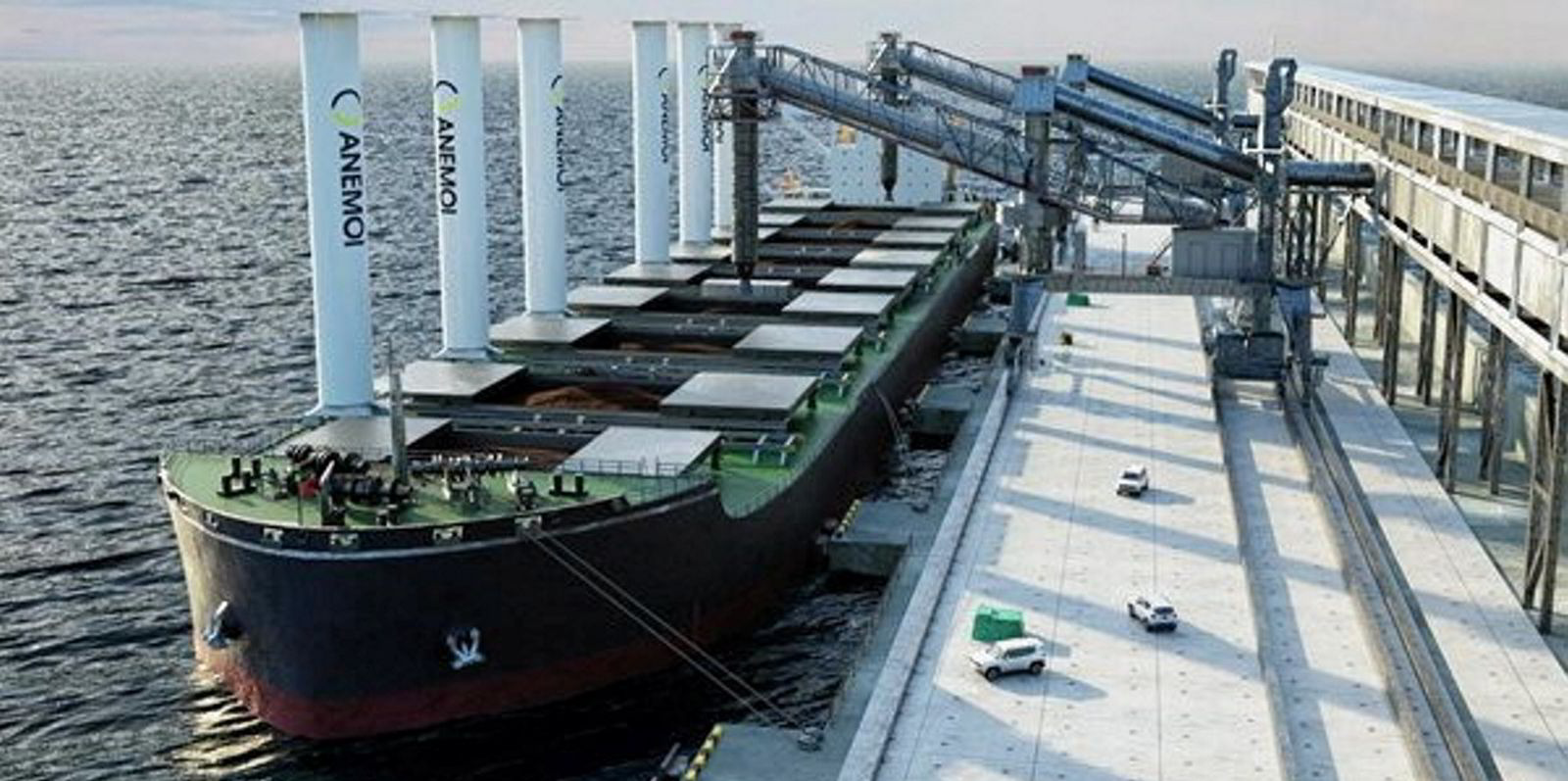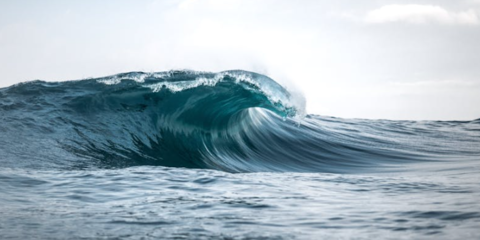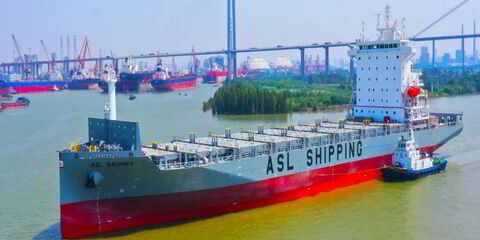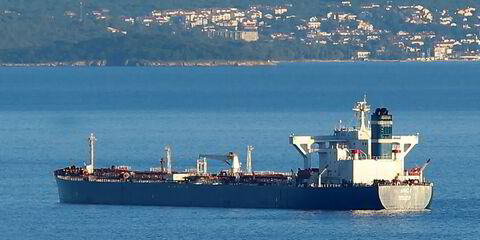An Oldendorff Carriers newcastlemax designed to feature rotor sails will enjoy a big boost in efficiency, according to a study.
The 210,000-dwt bulker prototype was assessed by class society Lloyd’s Register, which has granted approval in principle for the Shanghai Merchant Ship Design & Research Institute-designed vessel.
Oldendorff said it will be testing out sails developed by Anemoi in 2021.
Lloyd’s Register assessed the calculation used to estimate the impact the rotor sails will have on the Energy Efficiency Design Index (EEDI).
It agreed that the newbuilding would have its EEDI score reduced from 1.92 to 1.37, a drop of 29%, if six 30-metre sails were fitted.
Mark Darley, global marine & offshore director at Lloyd’s Register, said: “The fitting of rotor sails on this bulk carrier will considerably improve the vessel’s efficiency and is a clear example of how energy-saving devices can support the maritime industry with impending EEXI [Energy Efficiency Existing Ship Index] and CII [Carbon Intensity Indicator] regulations.”
Oldendorff’s director of innovation, Torsten Barenthin, added: “This has been an important project as part of Oldendorff Carriers’ commitment towards Getting to Zero.
“The results have demonstrated the impressive impact rotor sails have on regulatory obligations, which is a key consideration, in addition to the emission reduction benefits. We will continue our assessment of Anemoi’s technology for our fleet.”
Other vessels in planning stages
The approval also covers Anemoi’s rail deployment system, which moves the sails transversely across the deck, and its folding sail design, which allow loading to continue with no interference from the sails in port.
Other vessels included in the development project are an 85,000-dwt bulker, a VLOC, a 114,000-dwt aframax tanker, a 50,000-dwt MR tanker and a VLCC.
Nick Contopoulos, Anemoi’s chief operating officer, said: “We’re very pleased with the outcome for the first vessel.
“EEDI is a significant driver for the installation of rotor sail technology, and, as we grow closer to the implementation of EEXI and CII, they too become important incentives, along with the overarching reductions in fuel consumption and associated emissions.”
Rotor sails are modern mechanical devices comprising tall cylinders that, when driven to spin, harness the wind to provide auxiliary propulsion to vessels.
They can reduce fuel consumption and lower emissions by between 5% and 30%.




